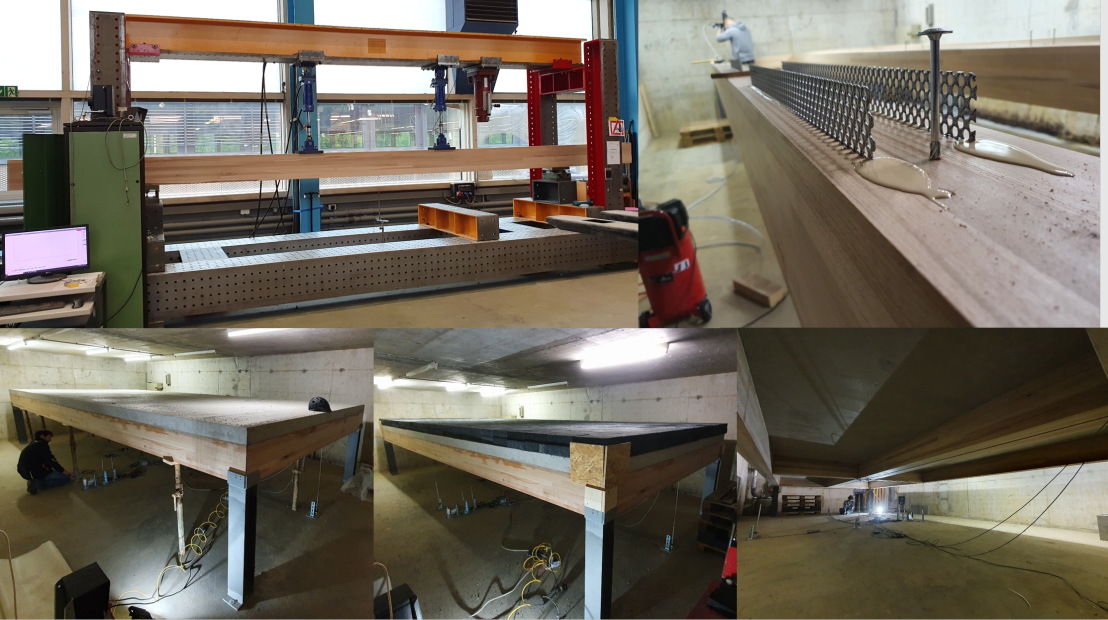Long-term behaviour of timber-concrete composite ribbed slab elements made of beech GLT
Summary

Timber-concrete composite (TCC) slabs offer a combination of the advantages of both construction materials, both in terms of structural capacity and building physics. For this reason, they are nowadays widely used as one of the preferred slab systems for tall timber and timber-hybrid buildings, which are seen as the future of the sustainably built environment. A major criterion in the structural design of TCC slabs is the accurate knowledge on the material long-term deformation behavior, both of the components (timber, concrete, and connection) and of the composite.
In this project, the long-term deformation behavior of an innovative TCC ribbed slab element will be investigated over a period of 5 years. The slab is made out of European beech square-laminated rods (German: Buche Stabschichtholz, Fagus Suisse SA), which are connected to the concrete by glued-in shear connector plates (TiComTec) using a 2c PUR glue (Henkel AG). Next to the ribbed slab element, spanning 7.80 m with a width of 3.40, the deformations of four separate 8 m long beech square-laminated rod beams will be measured as well. A controlled climate variation corresponding to the conditions of service class 1 (Eurocode 5, ca. 8-12% wood moisture content) will be applied seasonally. This procedure allows for the characterization of the timber’s long-term creep components, namely the time- and moisture-dependent components. The results and conclusions, including recommendations for creep coefficients and verified calculation models for the composite section, are expected to allow practicing engineers to eliminate the uncertainty of long-term deformations in the design procedure of TCC slabs made out of European beech wood.
Support
This project is carried out in collaboration with INGE Zwhatt (B3 Kolb AG & Schnetzer Puskas Ingenieure AG), Renggli AG, and Fagus Suisse SA, and is kindly supported by Aktionsplan Holz APH 2021-2026 of the Federal Office for the Environment FOEN.


